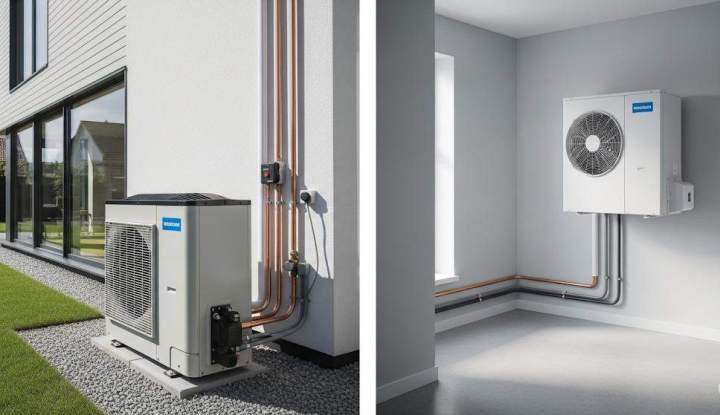How Heat Pump Systems Work: A Complete Guide
Heat Pump Systems Admin / August 13, 2025

Understanding Heat Pump
A heat pump is a device that transfers heat from one location to another, using a refrigeration cycle. Unlike traditional heating systems that generate heat, heat pumps move existing heat from the air, ground, or water into a building during winter and reverse the process for cooling in summer. This dual functionality is what makes heat pumps unique, offering both heating and cooling solutions in a single unit.
The Basic Components of a Heat Pump
Understanding the key components of a heat pump is crucial to appreciating how it functions:
1. Evaporator Coil
The evaporator coil is responsible for absorbing heat from the environment—whether it’s outdoor air or ground sources. As the refrigerant within the coil absorbs heat, it transforms from a liquid to a gas.
2. Compressor
The compressor plays a pivotal role by compressing the gaseous refrigerant, raising its temperature and pressure. This process is essential for transitioning the refrigerant into a state where it can release heat effectively.
3. Condenser Coil
Once the refrigerant is compressed, it moves to the condenser coil. Here, it releases the absorbed heat into the indoor environment, cooling down and returning to a liquid state. This process is reversed in summer when the heat pump acts as an air conditioner.
4. Expansion Valve
The expansion valve regulates the flow of refrigerant into the evaporator. It lowers the pressure of the refrigerant, enabling it to absorb heat efficiently from the surroundings.
How Heat Pumps Operate
Heat pumps utilize a refrigeration cycle that involves the continuous circulation of refrigerant between the evaporator and condenser coils. Here’s a breakdown of the cycle:
1. Heating Mode
- Absorption of Heat: The heat pump absorbs heat from the outside air or ground through the evaporator coil.
- Compression: The compressor increases the temperature and pressure of the refrigerant gas.
- Heat Release: The hot gas travels to the condenser coil, where it releases heat into the indoor space.
- Cooling Down: The refrigerant cools and condenses back into a liquid, flowing back to the evaporator coil to repeat the cycle.
2. Cooling Mode
- Heat Extraction: In cooling mode, the process reverses. The evaporator coil now functions inside the home, absorbing heat from the indoor air.
- Refrigerant Compression: The compressor compresses the refrigerant, which then moves to the condenser coil located outside.
- Heat Rejection: The refrigerant releases heat outdoors, cooling the indoor air before circulating it back inside.
Types of Heat Pump Systems
Heat pumps come in various types, each suited to different applications and climates:
1. Air-Source Heat Pumps
These are the most common type, extracting heat from the ambient air. They are typically more efficient in moderate climates but can struggle in extreme cold.
2. Ground-Source (Geothermal) Heat Pumps
Geothermal heat pumps leverage the stable temperatures of the ground. They require more extensive installation due to underground loops but provide higher efficiency and lower operating costs.
3. Water-Source Heat Pumps
These systems extract heat from bodies of water, such as lakes or wells. They are effective in areas with abundant water sources and can achieve high efficiency.
Advantages of Heat Pumps
Heat pumps offer numerous advantages, making them an appealing choice for both residential and commercial applications:
- Energy Efficiency: Heat pumps typically require less energy than conventional heating systems, resulting in lower utility bills.
-
Environmental Impact: By transferring heat rather than generating it, heat pumps reduce greenhouse gas emissions.
- Versatility: With both heating and cooling capabilities, heat pumps are suitable for various climates and applications.
-
Long Lifespan: Heat pumps generally have a longer lifespan than conventional HVAC systems, reducing the frequency of replacements.
Installation Considerations
When considering a heat pump system, several factors should be taken into account:
-
Sizing: Proper sizing is crucial for efficiency. An undersized unit may struggle to maintain comfort, while an oversized unit can lead to inefficiencies.
-
Location: The placement of the outdoor unit impacts performance. Ensure adequate airflow and accessibility for maintenance.
-
Local Climate: Choose a heat pump type suitable for your climate to maximize efficiency and effectiveness.
Heat pump technology offers an efficient and versatile solution for year-round home comfort. For personalized advice on whether a heat pump is right for your home, consult with an HVAC expert.